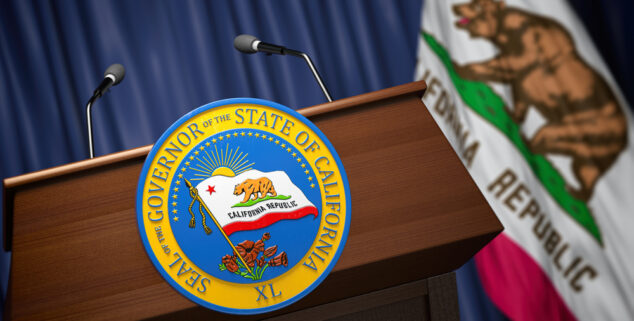Analysis
How much time does the California governor have to act on bills?
 California Governor's seal
California Governor's sealANALYSIS – How long does the Governor have to sign or veto a bill? Does the 12 days include weekends and holidays? When does the 30-day timeline start? What happens when the Legislature adjourns?
California’s Governor has three options when the Legislature sends the Governor a bill: Sign it; veto it; or, allow the bill to become law without the Governor’s signature. Article IV, Section 10(a) provides in part: “Each bill passed by the Legislature shall be presented to the Governor. It becomes a statute if it is signed by the Governor.”
What are the timing requirements for these actions? In general, the Governor has 12 days in which to act on a bill sent to the Governor by the Legislature. That 12-day period begins once the bill has been “presented” to the Governor, not the day that the bill passed the Senate or Assembly.
Recall that, after both houses pass a bill, but before the bill reaches the Governor’s Desk, the bill must go through the engrossing and enrolling processes. In the history section of the bill, look for the following:
| 06/29/22 | Enrolled and presented to the Governor at 10 p.m. |
This entry in the bill’s history will follow one that looks like the following example:
| 06/26/22 | Senate amendments concurred in. To Engrossing and Enrolling. |
In the above example, the 12-day period began on June 29 because that is when the bill was presented to the Governor. Here, the Governor would have until July 11 to act on the bill. The 12-day period does not include Sundays. Therefore, if the 12 days conclude on a Sunday, the Governor has until Monday to sign or veto that bill.
In terms of timing, the 12-day “signing” period is applicable to all bills that are presented to the Governor twelve or more days prior to the date the Legislature adjourns for a joint recess in the first year (i.e., the odd-numbered year) of the two-year session, as well as on or before August 20th of the second year (i.e., the even-numbered year) of the 2-year Session.
The applicable calendar date in the first year of the Session is based on the date both houses of the Legislature “consent” to adjourn for the interim recess and is subject to change. This date is set forth in the Joint Rules of the Assembly and Senate.
The applicable calendar date in the second year of the Session is set forth in Article IV, Section 10(b)(2), which provides: “Any bill passed by the Legislature before September 1 of the second calendar year of the biennium of the legislative session and in the possession of the Governor on or after September 1 that is not returned on or before September 30 of that year becomes a statute.”
Based upon this constitutional provision, bills that are passed before September 1 in the second year of the Session and which are in the Governor’s possession on or after September 1 must be signed or vetoed by September 30th of that year or they become a statute without the Governor’s signature.
Want to see more stories like this? Sign up for The Roundup, the free daily newsletter about California politics from the editors of Capitol Weekly. Stay up to date on the news you need to know.
Sign up below, then look for a confirmation email in your inbox.

Leave a Reply